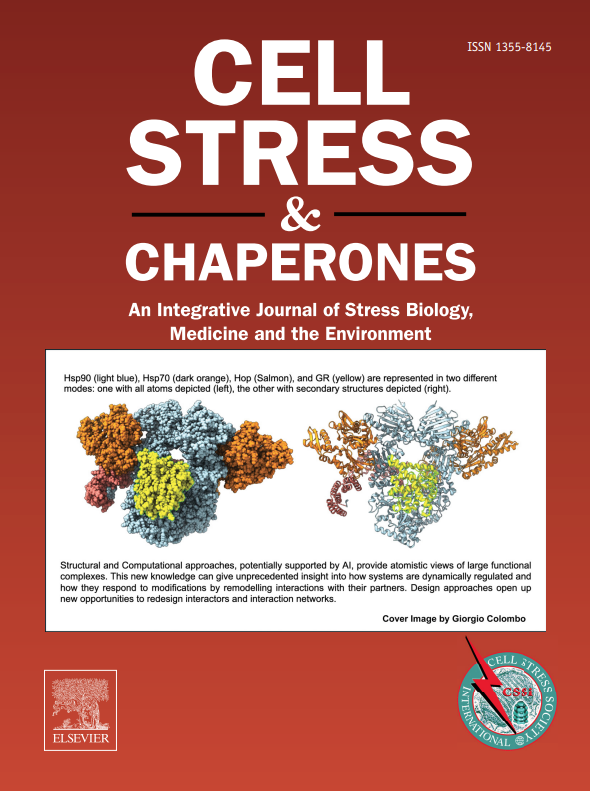不同急性胁迫下黑虎虾 Hsp60 和 Hsp10 的特征和功能分析
IF 3.3
3区 生物学
Q3 CELL BIOLOGY
引用次数: 0
摘要
热休克蛋白(Hsps)是一类高度保守的蛋白,从细菌到人类,几乎所有生物体都会产生这类蛋白。Hsp60 和 Hsp10 是最重要的线粒体伴侣蛋白,参与环境应激反应。本研究克隆了单孔拟南星鱼(Penaeus monodon)的Hsp60(PmHsp60)和Hsp10(PmHsp10)的全长互补DNA(cDNA)。序列分析表明,PmHsp60 和 PmHsp10 分别编码 578 和 102 个氨基酸的多肽。结果表明,PmHsp60和PmHsp10参与了对虾在pH挑战、渗透胁迫和重金属暴露下的鳃和肝胰腺反应。ATP酶和伴侣蛋白活性测定表明,PmHsp60可减缓蛋白质变性,Hsp60/Hsp10可结合产生具有有效伴侣蛋白和ATP酶活性的伴侣蛋白复合物。总之,本研究为进一步了解对虾 Hsp60 和 Hsp10 的环境胁迫响应功能机制提供了有用的信息。本文章由计算机程序翻译,如有差异,请以英文原文为准。
Characterization and function analysis of Hsp60 and Hsp10 under different acute stresses in black tiger shrimp, Penaeus monodon
Heat shock proteins (Hsps) are a class of highly conserved proteins produced in virtually all living organisms from bacteria to humans. Hsp60 and Hsp10, the most important mitochondrial chaperones, participate in environmental stress responses. In this study, the full-length complementary DNAs (cDNAs) of Hsp60 (PmHsp60) and Hsp10 (PmHsp10) were cloned from Penaeus monodon. Sequence analysis showed that PmHsp60 and PmHsp10 encoded polypeptides of 578 and 102 amino acids, respectively. The expression profiles of PmHsp60 and PmHsp10 were detected in the gills and hepatopancreas of the shrimps under pH challenge, osmotic stress, and heavy metal exposure, and results suggested that PmHsp60 and PmHsp10 were involved in the responses to these stimuli. ATPase and chaperone activity assay indicated that PmHsp60 could slow down protein denaturation and that Hsp60/Hsp10 may be combined to produce a chaperone complex with effective chaperone and ATPase activities. Overall, this study provides useful information to help further understand the functional mechanisms of the environmental stress responses of Hsp60 and Hsp10 in shrimp.
求助全文
通过发布文献求助,成功后即可免费获取论文全文。
去求助
来源期刊

Cell Stress & Chaperones
生物-细胞生物学
CiteScore
7.60
自引率
2.60%
发文量
59
审稿时长
6-12 weeks
期刊介绍:
Cell Stress and Chaperones is an integrative journal that bridges the gap between laboratory model systems and natural populations. The journal captures the eclectic spirit of the cellular stress response field in a single, concentrated source of current information. Major emphasis is placed on the effects of climate change on individual species in the natural environment and their capacity to adapt. This emphasis expands our focus on stress biology and medicine by linking climate change effects to research on cellular stress responses of animals, micro-organisms and plants.
 求助内容:
求助内容: 应助结果提醒方式:
应助结果提醒方式:


